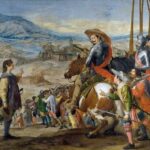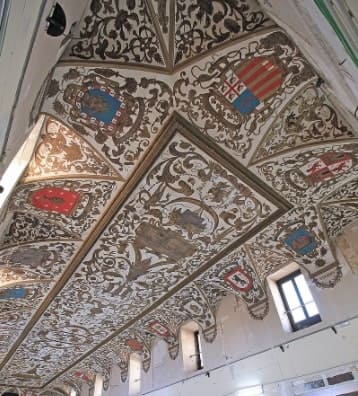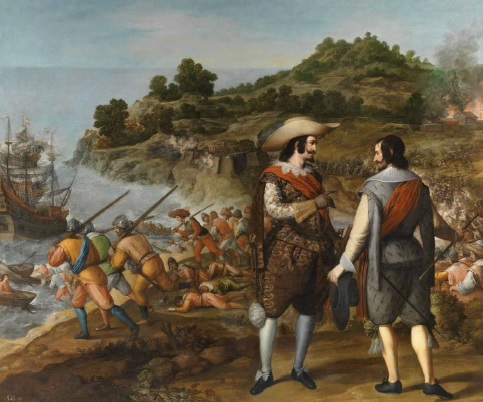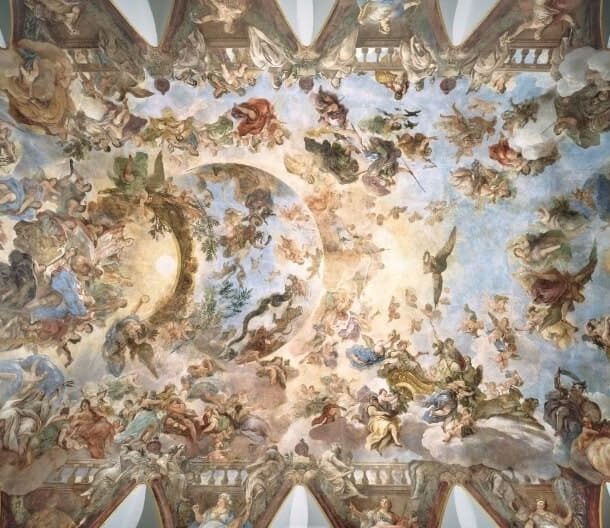
Jusepe Leonardo’s painting depicts the liberation of the town of Brisach in October 1633, which was under the control of the Protestant Otto Ludwig. In that year the Duke of Feria completed the free communication between Milan, Germany and the Low Countries, i.e. via the well-known Spanish road, where Brisach played an important strategic role. In this work for the Salon de Reinos, the foreground shows the Duke of Feria, Gómez Suárez de Figueroa, who, as in Carducho’s paintings, appears armed with a loriga, a general’s red sash and the baton of command in his right hand, on his bucking horse while pointing to the battlefield. In the background are arquebusiers, preceded by halberdiers, guarding the flags and ammunition wagons. On an artistic level, Leonardo moved towards naturalism, absorbing the lessons of Velázquez.
Collection: Images
Project: 5. Power and powers in the history of Europe: oligarchies, political participation and democracy., 6. Under a cloak of terror: violence and armed conflict in Europe.
Chronology: XVII
Scope: Secondary Education, Baccalaureate, University
Resource type: Image
Format: Oil on canvas (305 x 333 cm)
Source: Museo Nacional del Prado (Madrid)
Language: Spanish
Date: 1634-35
Owner: Álvaro Romero González (Modernalia)
Identifier: P000859
Copyright: Museo del Prado (Madrid)
Abstract: Representation of the Relief of Brisach, a work that forms part, along with others, of the commemoration of a series of land and naval victories that were won by the armies of the Hispanic Monarchy during the first period of the Thirty Years' War. These canvases were destined for the Salón de Reinos of the Buen Retiro Palace
Image
Tags








